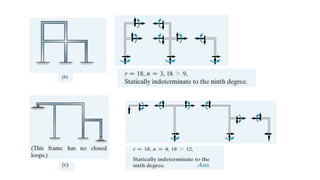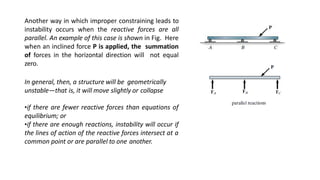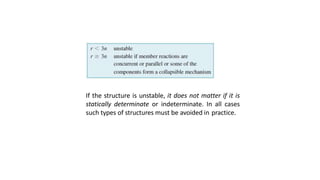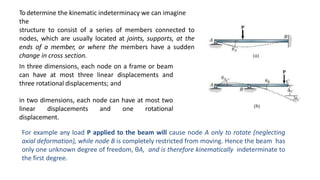1. There are two types of structures: mass structures which resist loads through their weight, and framed structures which resist loads through their geometry.
2. Framed structures are made of basic elements like rods, beams, columns, plates, and slabs. Plane frames have all members in one plane, while space frames have members in three dimensions.
3. Structures are designed to resist bending moments, shear forces, deflections, torsional stresses, and axial stresses which are evaluated at critical sections through structural analysis. Member dimensions are then determined through design based on these stresses.

























